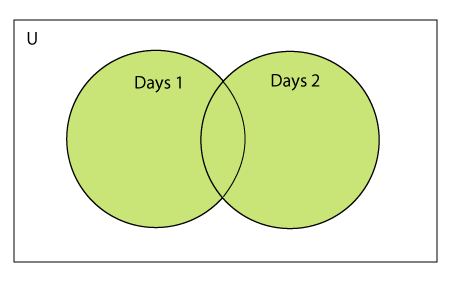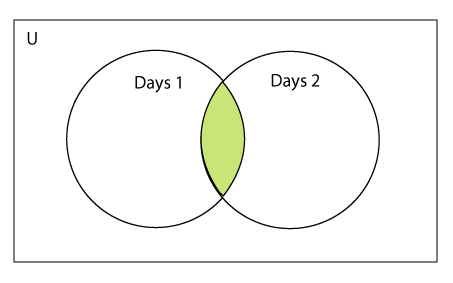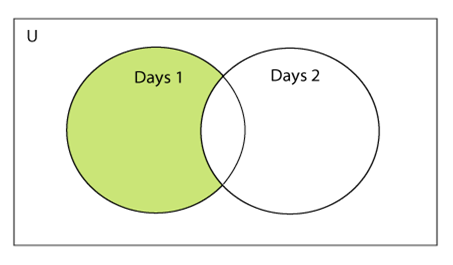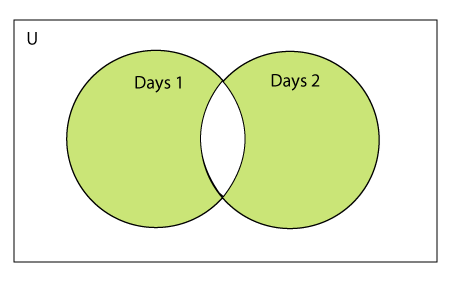TheDeveloperBlog.com
C-Sharp | Java | Python | Swift | GO | WPF | Ruby | Scala | F# | JavaScript | SQL | PHP | Angular | HTML
Python Sets
Python Sets for beginners and professionals with examples on files, directories, permission, backup, ls, man, pwd, cd, chmod, man, shell, pipes, filters, regex, vi etc..
Python SetA Python set is the collection of the unordered items. Each element in the set must be unique, immutable, and the sets remove the duplicate elements. Sets are mutable which means we can modify it after its creation. Unlike other collections in Python, there is no index attached to the elements of the set, i.e., we cannot directly access any element of the set by the index. However, we can print them all together, or we can get the list of elements by looping through the set. Creating a set
The set can be created by enclosing the comma-separated immutable items with the curly braces {}. Python also provides the set() method, which can be used to create the set by the passed sequence. Example 1: Using curly braces
Days = {"Monday", "Tuesday", "Wednesday", "Thursday", "Friday", "Saturday", "Sunday"}
print(Days)
print(type(Days))
print("looping through the set elements ... ")
for i in Days:
print(i)
Output: {'Friday', 'Tuesday', 'Monday', 'Saturday', 'Thursday', 'Sunday', 'Wednesday'}
<class 'set'>
looping through the set elements ...
Friday
Tuesday
Monday
Saturday
Thursday
Sunday
Wednesday
Example 2: Using set() method
Days = set(["Monday", "Tuesday", "Wednesday", "Thursday", "Friday", "Saturday", "Sunday"])
print(Days)
print(type(Days))
print("looping through the set elements ... ")
for i in Days:
print(i)
Output: {'Friday', 'Wednesday', 'Thursday', 'Saturday', 'Monday', 'Tuesday', 'Sunday'}
<class 'set'>
looping through the set elements ...
Friday
Wednesday
Thursday
Saturday
Monday
Tuesday
Sunday
It can contain any type of element such as integer, float, tuple etc. But mutable elements (list, dictionary, set) can't be a member of set. Consider the following example.
# Creating a set which have immutable elements
set1 = {1,2,3, "JavaTpoint", 20.5, 14}
print(type(set1))
#Creating a set which have mutable element
set2 = {1,2,3,["TheDeveloperBlog",4]}
print(type(set2))
Output: <class 'set'>
Traceback (most recent call last)
<ipython-input-5-9605bb6fbc68> in <module>
4
5 #Creating a set which holds mutable elements
----> 6 set2 = {1,2,3,["TheDeveloperBlog",4]}
7 print(type(set2))
TypeError: unhashable type: 'list'
In the above code, we have created two sets, the set set1 have immutable elements and set2 have one mutable element as a list. While checking the type of set2, it raised an error, which means set can contain only immutable elements. Creating an empty set is a bit different because empty curly {} braces are also used to create a dictionary as well. So Python provides the set() method used without an argument to create an empty set.
# Empty curly braces will create dictionary
set3 = {}
print(type(set3))
# Empty set using set() function
set4 = set()
print(type(set4))
Output: <class 'dict'> <class 'set'> Let's see what happened if we provide the duplicate element to the set.
set5 = {1,2,4,4,5,8,9,9,10}
print("Return set with unique elements:",set5)
Output: Return set with unique elements: {1, 2, 4, 5, 8, 9, 10}
In the above code, we can see that set5 consisted of multiple duplicate elements when we printed it remove the duplicity from the set. Adding items to the set
Python provides the add() method and update() method which can be used to add some particular item to the set. The add() method is used to add a single element whereas the update() method is used to add multiple elements to the set. Consider the following example. Example: 1 - Using add() method
Months = set(["January","February", "March", "April", "May", "June"])
print("\nprinting the original set ... ")
print(months)
print("\nAdding other months to the set...");
Months.add("July");
Months.add ("August");
print("\nPrinting the modified set...");
print(Months)
print("\nlooping through the set elements ... ")
for i in Months:
print(i)
Output: printing the original set ...
{'February', 'May', 'April', 'March', 'June', 'January'}
Adding other months to the set...
Printing the modified set...
{'February', 'July', 'May', 'April', 'March', 'August', 'June', 'January'}
looping through the set elements ...
February
July
May
April
March
August
June
January
To add more than one item in the set, Python provides the update() method. It accepts iterable as an argument. Consider the following example. Example - 2 Using update() function
Months = set(["January","February", "March", "April", "May", "June"])
print("\nprinting the original set ... ")
print(Months)
print("\nupdating the original set ... ")
Months.update(["July","August","September","October"]);
print("\nprinting the modified set ... ")
print(Months);
Output: printing the original set ...
{'January', 'February', 'April', 'May', 'June', 'March'}
updating the original set ...
printing the modified set ...
{'January', 'February', 'April', 'August', 'October', 'May', 'June', 'July', 'September', 'March'}
Removing items from the set
Python provides the discard() method and remove() method which can be used to remove the items from the set. The difference between these function, using discard() function if the item does not exist in the set then the set remain unchanged whereas remove() method will through an error. Consider the following example. Example-1 Using discard() method
months = set(["January","February", "March", "April", "May", "June"])
print("\nprinting the original set ... ")
print(months)
print("\nRemoving some months from the set...");
months.discard("January");
months.discard("May");
print("\nPrinting the modified set...");
print(months)
print("\nlooping through the set elements ... ")
for i in months:
print(i)
Output: printing the original set ...
{'February', 'January', 'March', 'April', 'June', 'May'}
Removing some months from the set...
Printing the modified set...
{'February', 'March', 'April', 'June'}
looping through the set elements ...
February
March
April
June
Python provides also the remove() method to remove the item from the set. Consider the following example to remove the items using remove() method. Example-2 Using remove() function
months = set(["January","February", "March", "April", "May", "June"])
print("\nprinting the original set ... ")
print(months)
print("\nRemoving some months from the set...");
months.remove("January");
months.remove("May");
print("\nPrinting the modified set...");
print(months)
Output: printing the original set ...
{'February', 'June', 'April', 'May', 'January', 'March'}
Removing some months from the set...
Printing the modified set...
{'February', 'June', 'April', 'March'}
We can also use the pop() method to remove the item. Generally, the pop() method will always remove the last item but the set is unordered, we can't determine which element will be popped from set. Consider the following example to remove the item from the set using pop() method.
Months = set(["January","February", "March", "April", "May", "June"])
print("\nprinting the original set ... ")
print(Months)
print("\nRemoving some months from the set...");
Months.pop();
Months.pop();
print("\nPrinting the modified set...");
print(Months)
Output: printing the original set ...
{'June', 'January', 'May', 'April', 'February', 'March'}
Removing some months from the set...
Printing the modified set...
{'May', 'April', 'February', 'March'}
In the above code, the last element of the Month set is March but the pop() method removed the June and January because the set is unordered and the pop() method could not determine the last element of the set. Python provides the clear() method to remove all the items from the set. Consider the following example.
Months = set(["January","February", "March", "April", "May", "June"])
print("\nprinting the original set ... ")
print(Months)
print("\nRemoving all the items from the set...");
Months.clear()
print("\nPrinting the modified set...")
print(Months)
Output: printing the original set ...
{'January', 'May', 'June', 'April', 'March', 'February'}
Removing all the items from the set...
Printing the modified set...
set()
Difference between discard() and remove()Despite the fact that discard() and remove() method both perform the same task, There is one main difference between discard() and remove(). If the key to be deleted from the set using discard() doesn't exist in the set, the Python will not give the error. The program maintains its control flow. On the other hand, if the item to be deleted from the set using remove() doesn't exist in the set, the Python will raise an error. Consider the following example. Example-
Months = set(["January","February", "March", "April", "May", "June"])
print("\nprinting the original set ... ")
print(Months)
print("\nRemoving items through discard() method...");
Months.discard("Feb"); #will not give an error although the key feb is not available in the set
print("\nprinting the modified set...")
print(Months)
print("\nRemoving items through remove() method...");
Months.remove("Jan") #will give an error as the key jan is not available in the set.
print("\nPrinting the modified set...")
print(Months)
Output: printing the original set ...
{'March', 'January', 'April', 'June', 'February', 'May'}
Removing items through discard() method...
printing the modified set...
{'March', 'January', 'April', 'June', 'February', 'May'}
Removing items through remove() method...
Traceback (most recent call last):
File "set.py", line 9, in
Months.remove("Jan")
KeyError: 'Jan'
Python Set OperationsSet can be performed mathematical operation such as union, intersection, difference, and symmetric difference. Python provides the facility to carry out these operations with operators or methods. We describe these operations as follows. Union of two SetsThe union of two sets is calculated by using the pipe (|) operator. The union of the two sets contains all the items that are present in both the sets. 
Consider the following example to calculate the union of two sets. Example 1: using union | operator
Days1 = {"Monday","Tuesday","Wednesday","Thursday", "Sunday"}
Days2 = {"Friday","Saturday","Sunday"}
print(Days1|Days2) #printing the union of the sets
Output: {'Friday', 'Sunday', 'Saturday', 'Tuesday', 'Wednesday', 'Monday', 'Thursday'}
Python also provides the union() method which can also be used to calculate the union of two sets. Consider the following example. Example 2: using union() method
Days1 = {"Monday","Tuesday","Wednesday","Thursday"}
Days2 = {"Friday","Saturday","Sunday"}
print(Days1.union(Days2)) #printing the union of the sets
Output: {'Friday', 'Monday', 'Tuesday', 'Thursday', 'Wednesday', 'Sunday', 'Saturday'}
Intersection of two setsThe intersection of two sets can be performed by the and & operator or the intersection() function. The intersection of the two sets is given as the set of the elements that common in both sets. 
Consider the following example. Example 1: Using & operator
Days1 = {"Monday","Tuesday", "Wednesday", "Thursday"}
Days2 = {"Monday","Tuesday","Sunday", "Friday"}
print(Days1&Days2) #prints the intersection of the two sets
Output: {'Monday', 'Tuesday'}
Example 2: Using intersection() method
set1 = {"Devansh","John", "David", "Martin"}
set2 = {"Steve", "Milan", "David", "Martin"}
print(set1.intersection(set2)) #prints the intersection of the two sets
Output: {'Martin', 'David'}
Example 3:
set1 = {1,2,3,4,5,6,7}
set2 = {1,2,20,32,5,9}
set3 = set1.intersection(set2)
print(set3)
Output: {1,2,5}
The intersection_update() methodThe intersection_update() method removes the items from the original set that are not present in both the sets (all the sets if more than one are specified). The intersection_update() method is different from the intersection() method since it modifies the original set by removing the unwanted items, on the other hand, the intersection() method returns a new set. Consider the following example.
a = {"Devansh", "bob", "castle"}
b = {"castle", "dude", "emyway"}
c = {"fuson", "gaurav", "castle"}
a.intersection_update(b, c)
print(a)
Output: {'castle'}
Difference between the two setsThe difference of two sets can be calculated by using the subtraction (-) operator or intersection() method. Suppose there are two sets A and B, and the difference is A-B that denotes the resulting set will be obtained that element of A, which is not present in the set B. 
Consider the following example. Example 1 : Using subtraction ( - ) operator
Days1 = {"Monday", "Tuesday", "Wednesday", "Thursday"}
Days2 = {"Monday", "Tuesday", "Sunday"}
print(Days1-Days2) #{"Wednesday", "Thursday" will be printed}
Output: {'Thursday', 'Wednesday'}
Example 2 : Using difference() method
Days1 = {"Monday", "Tuesday", "Wednesday", "Thursday"}
Days2 = {"Monday", "Tuesday", "Sunday"}
print(Days1.difference(Days2)) # prints the difference of the two sets Days1 and Days2
Output: {'Thursday', 'Wednesday'}
Symmetric Difference of two setsThe symmetric difference of two sets is calculated by ^ operator or symmetric_difference() method. Symmetric difference of sets, it removes that element which is present in both sets. Consider the following example: 
Example - 1: Using ^ operator
a = {1,2,3,4,5,6}
b = {1,2,9,8,10}
c = a^b
print(c)
Output: {3, 4, 5, 6, 8, 9, 10}
Example - 2: Using symmetric_difference() method
a = {1,2,3,4,5,6}
b = {1,2,9,8,10}
c = a.symmetric_difference(b)
print(c)
Output: {3, 4, 5, 6, 8, 9, 10}
Set comparisonsPython allows us to use the comparison operators i.e., <, >, <=, >= , == with the sets by using which we can check whether a set is a subset, superset, or equivalent to other set. The boolean true or false is returned depending upon the items present inside the sets. Consider the following example.
Days1 = {"Monday", "Tuesday", "Wednesday", "Thursday"}
Days2 = {"Monday", "Tuesday"}
Days3 = {"Monday", "Tuesday", "Friday"}
#Days1 is the superset of Days2 hence it will print true.
print (Days1>Days2)
#prints false since Days1 is not the subset of Days2
print (Days1Output: True False False FrozenSetsThe frozen sets are the immutable form of the normal sets, i.e., the items of the frozen set cannot be changed and therefore it can be used as a key in the dictionary. The elements of the frozen set cannot be changed after the creation. We cannot change or append the content of the frozen sets by using the methods like add() or remove(). The frozenset() method is used to create the frozenset object. The iterable sequence is passed into this method which is converted into the frozen set as a return type of the method. Consider the following example to create the frozen set.
Frozenset = frozenset([1,2,3,4,5])
print(type(Frozenset))
print("\nprinting the content of frozen set...")
for i in Frozenset:
print(i);
Frozenset.add(6) #gives an error since we cannot change the content of Frozenset after creation
Output: <class 'frozenset'>
printing the content of frozen set...
1
2
3
4
5
Traceback (most recent call last):
File "set.py", line 6, in <module>
Frozenset.add(6) #gives an error since we can change the content of Frozenset after creation
AttributeError: 'frozenset' object has no attribute 'add'
Frozenset for the dictionaryIf we pass the dictionary as the sequence inside the frozenset() method, it will take only the keys from the dictionary and returns a frozenset that contains the key of the dictionary as its elements. Consider the following example.
Dictionary = {"Name":"John", "Country":"USA", "ID":101}
print(type(Dictionary))
Frozenset = frozenset(Dictionary); #Frozenset will contain the keys of the dictionary
print(type(Frozenset))
for i in Frozenset:
print(i)
Output: <class 'dict'> <class 'frozenset'> Name Country ID Set Programming ExampleExample - 1: Write a program to remove the given number from the set.
my_set = {1,2,3,4,5,6,12,24}
n = int(input("Enter the number you want to remove"))
my_set.discard(n)
print("After Removing:",my_set)
Output: Enter the number you want to remove:12
After Removing: {1, 2, 3, 4, 5, 6, 24}
Example - 2: Write a program to add multiple elements to the set. set1 = set([1,2,4,"John","CS"]) set1.update(["Apple","Mango","Grapes"]) print(set1) Output: {1, 2, 4, 'Apple', 'John', 'CS', 'Mango', 'Grapes'}
Example - 3: Write a program to find the union between two set. set1 = set(["Peter","Joseph", 65,59,96]) set2 = set(["Peter",1,2,"Joseph"]) set3 = set1.union(set2) print(set3) Output: {96, 65, 2, 'Joseph', 1, 'Peter', 59}
Example- 4: Write a program to find the intersection between two sets.
set1 = {23,44,56,67,90,45,"TheDeveloperBlog"}
set2 = {13,23,56,76,"Sachin"}
set3 = set1.intersection(set2)
print(set3)
Output: {56, 23}
Example - 5: Write the program to add element to the frozenset.
set1 = {23,44,56,67,90,45,"TheDeveloperBlog"}
set2 = {13,23,56,76,"Sachin"}
set3 = set1.intersection(set2)
print(set3)
Output: TypeError: 'frozenset' object does not support item assignment Above code raised an error because frozensets are immutable and can't be changed after creation. Example - 6: Write the program to find the issuperset, issubset and superset. set1 = set(["Peter","James","Camroon","Ricky","Donald"]) set2 = set(["Camroon","Washington","Peter"]) set3 = set(["Peter"]) issubset = set1 >= set2 print(issubset) issuperset = set1 <= set2 print(issuperset) issubset = set3 <= set2 print(issubset) issuperset = set2 >= set3 print(issuperset) Output: False False True True Python Built-in set methodsPython contains the following methods to be used with the sets.
Next TopicPython Dictionary
|
Related Links:
- Python global and nonlocal
- Python not: If Not True
- Python Convert Decimal Binary Octal and Hexadecimal
- Python Tkinter Scale
- Python Tkinter Scrollbar
- Python Tkinter Text
- Python History
- Python Number: random, float and divmod
- Python Tkinter Toplevel
- Python Tkinter Spinbox
- Python Tkinter PanedWindow
- Python Tkinter LabelFrame
- Python Tkinter MessageBox
- Python Website Blocker
- Python Console Programs: Input and Print
- Python Display Calendar
- Python Check Number Odd or Even
- Python readline Example: Read Next Line
- Python Anagram Find Method
- Python Any: Any Versus All, List Performance
- Python Filename With Date Example (date.today)
- Python Find String: index and count
- Python filter (Lambda Removes From List or Range)
- Python ASCII Value of Character
- Python Sum Example
- Python make simple Calculator
- Python Add Two Matrices
- Python Multiply Two Matrices
- Python SyntaxError (invalid syntax)
- Python Transpose Matrix
- Python Remove Punctuation from String
- Python Dictionary items() method with Examples
- Python Dictionary keys() method with Examples
- Python Textwrap Wrap Example
- Python Dictionary popitem() method with Examples
- Python Dictionary pop() method with Examples
- Python HTML: HTMLParser, Read Markup
- Python Tkinter Tutorial
- Python Array Examples
- Python ord, chr Built Ins
- Python Dictionary setdefault() method with Examples
- Python Dictionary update() method with Examples
- Python Dictionary values() method with Examples
- Python complex() function with Examples
- Python delattr() function with Examples
- Python dir() function with Examples
- Python divmod() function with Examples
- Python Loops
- Python for loop
- Python while loop
- Python enumerate() function with Examples
- Python break
- Python continue
- Python dict() function with Examples
- Python pass
- Python Strings
- Python Lists
- Python Tuples
- Python Sets
- Python Built-in Functions
- Python filter() function with Examples
- Python dict Keyword (Copy Dictionary)
- Python Dictionary Order Benchmark
- Python Dictionary String Key Performance
- Python 2D Array: Create 2D Array of Integers
- Python Divmod Examples, Modulo Operator
- bin() in Python | Python bin() Function with Examples
- Python Oops Concept
- Python Object Classes
- Python Constructors
- Python hash() function with Examples
- Python Pandas | Python Pandas Tutorial
- Python Class Examples: Init and Self
- Python help() function with Examples
- Python IndentationError (unexpected indent)
- Python Index and Count (Search List)
- Python min() function with Examples
- Python classmethod and staticmethod Use
- Python set() function with Examples
- Python hex() function with Examples
- Python id() function with Examples
- Python sorted() function with Examples
- Python next() function with Examples
- Python Compound Interest
- Python List insert() method with Examples
- Python Datetime Methods: Date, Timedelta
- Python setattr() function with Examples
- Python 2D List Examples
- Python Pandas Data operations
- Python Def Methods and Arguments (callable)
- Python slice() function with Examples
- Python Remove HTML Tags
- Python input() function with Examples
- Python enumerate (For Index, Element)
- Python Display the multiplication Table
- Python int() function with Examples
- Python Error: Try, Except and Raise
- Python isinstance() function with Examples
- Python oct() function with Examples
- Python startswith, endswith Examples
- Python List append() method with Examples
- Python NumPy Examples (array, random, arange)
- Python Replace Example
- Python List clear() method with Examples
- Python List copy() method with Examples
- Python Lower Dictionary: String Performance
- Python Lower and Upper: Capitalize String
- Python Dictionary Examples
- Python map Examples
- Python Len (String Length)
- Python Padding Examples: ljust, rjust
- Python Type: setattr and getattr Examples
- Python String List Examples
- Python String
- Python Remove Duplicates From List
- Python If Examples: Elif, Else
- Python Programs | Python Programming Examples
- Python List count() method with Examples
- Python List extend() method with Examples
- Python List index() method with Examples
- Python List pop() method with Examples
- Python Palindrome Method: Detect Words, Sentences
- Python Path: os.path Examples
- Python List remove() method with Examples
- Python List reverse() method with Examples
- Top 50+ Python Interview Questions (2021)
- Python List sort() method with Examples
- Python sort word in Alphabetic Order
- abs() in Python | Python abs() Function with Examples
- Python String | encode() method with Examples
- all() in Python | Python all() Function with Examples
- any() in Python | Python any() Function with Examples
- Python Built In Functions
- ascii() in Python | Python ascii() Function with Examples
- Python bytes, bytearray Examples (memoryview)
- bool() in Python | Python bool() Function with Examples
- bytearray() in Python | Python bytearray() Function with Examples
- Python Caesar Cipher
- bytes() in Python | Python bytes() Function with Examples
- Python Sum of Natural Numbers
- callable() in Python | Python callable() Function with Examples
- Python Set add() method with Examples
- Python Set discard() method with Examples
- Python Set pop() method with Examples
- Python math.floor, import math Examples
- Python Return Keyword (Return Multiple Values)
- Python while Loop Examples
- Python Math Examples
- Python Reverse String
- Python max, min Examples
- Python pass Statement
- Python Set remove() method with Examples
- Python Dictionary
- Python Functions
- Python String | capitalize() method with Examples
- Python String | casefold() method with Examples
- Python re.sub, subn Methods
- Python subprocess Examples: subprocess.run
- Python Tkinter Checkbutton
- Python Tkinter Entry
- Python String | center() method with Examples
- Python Substring Examples
- Python pow Example, Power Operator
- Python Lambda
- Python Files I/O
- Python Modules
- Python String | count() method with Examples
- Python String | endswith() method with Examples
- Python String | expandtabs() method with Examples
- Python Prime Number Method
- Python String | find() method with Examples
- Python String | format() method with Examples
- Python String | index() method with Examples
- Python String | isalnum() method with Examples
- Python String | isalpha() method with Examples
- Python String | isdecimal() method with Examples
- Python Pandas Sorting
- Python String | isdigit() method with Examples
- Python Convert Types
- Python String | isidentifier() method with Examples
- Python Pandas Add column to DataFrame columns
- Python String | islower() method with Examples
- Python Pandas Reading Files
- Python Right String Part
- Python IOError Fix, os.path.exists
- Python Punctuation and Whitespace (string.punctuation)
- Python isalnum: String Is Alphanumeric
- Python Pandas Series
- Python Pandas DataFrame
- Python Recursion Example
- Python ROT13 Method
- Python StringIO Examples and Benchmark
- Python Import Syntax Examples: Modules, NameError
- Python in Keyword
- Python iter Example: next
- Python Round Up and Down (Math Round)
- Python List Comprehension
- Python Collection Module
- Python Math Module
- Python OS Module
- Python Random Module
- Python Statistics Module
- Python String Equals: casefold
- Python Sys Module
- Top 10 Python IDEs | Python IDEs
- Python Arrays
- Python Magic Method
- Python Stack and Queue
- Python MySQL Environment Setup
- Python MySQL Database Connection
- Python MySQL Creating New Database
- Python MySQL Creating Tables
- Python Word Count Method (re.findall)
- Python String Literal: F, R Strings
- Python MySQL Update Operation
- Python MySQL Join Operation
- Python Armstrong Number
- Learn Python Tutorial
- Python Factorial Number using Recursion
- Python Features
- Python Comments
- Python if else
- Python Translate and Maketrans Examples
- Python Website Blocker | Building Python Script
- Python Itertools Module: Cycle and Repeat
- Python Operators
- Python Int Example
- Python join Example: Combine Strings From List
- Python Read CSV File
- Python Write CSV File
- Python Read Excel File
- Python Write Excel File
- Python json: Import JSON, load and dumps
- Python Lambda Expressions
- Python Print the Fibonacci sequence
- Python format Example (Format Literal)
- Python Namedtuple Example
- Python SciPy Tutorial
- Python Applications
- Python KeyError Fix: Use Dictionary get
- Python Resize List: Slice and Append
- Python String | translate() method with Examples
- Python Copy List (Slice Entire List)
- Python None: TypeError, NoneType Has No Length
- Python MySQL Performing Transactions
- Python String | isnumeric() method with Examples
- Python MongoDB Example
- Python String | isprintable() method with Examples
- Python Tkinter Canvas
- Python String | isspace() method with Examples
- Python Tkinter Frame
- Python Tkinter Label
- Python Tkinter Listbox
- Python String | istitle() method with Examples
- Python Website Blocker | Script Deployment on Linux
- Python Website Blocker | Script Deployment on Windows
- Python String | isupper() method with Examples
- Python String split() method with Examples
- Python Slice Examples: Start, Stop and Step
- Python String | join() method with Examples
- Python String | ljust() method with Examples
- Python Sort by File Size
- Python Arithmetic Operations
- Python String | lower() method with Examples
- Python Exception Handling | Python try except
- Python Date
- Python Regex | Regular Expression
- Python Sending Email using SMTP
- Python Command Line Arguments
- Python List Comprehension Examples
- Python Assert Keyword
- Python Set Examples
- Python Fibonacci Sequence
- Python Maze Pathfinding Example
- Python Memoize: Dictionary, functools.lru_cache
- Python Timeit, Repeat Examples
- Python Strip Examples
- Python asyncio Example: yield from asyncio.sleep
- Python String Between, Before and After Methods
- Python bool Use (Returns True or False)
- Python Counter Example
- Python frozenset: Immutable Sets
- Python Generator Examples: Yield, Expressions
- Python CSV: csv.reader and Sniffer
- Python globals, locals, vars and dir
- Python abs: Absolute Value
- Python gzip: Compression Examples
- Python Function Display Calendar
- Python Display Fibonacci Sequence Recursion
- Python String | lstrip() method with Examples
- Python del Operator (Remove at Index or Key)
- Python String | partition() method with Examples
- Python String | replace() method with Examples
- Python Zip Examples: Zip Objects
- Python String | rfind() method with Examples
- Python String | rindex() method with Examples
- Python String rjust() method with Examples
- Python String rpartition() method with Examples
- Python String rsplit() method with Examples
- Python Area Of Triangle
- Python Quadratic Equation
- Python swap two Variables
- Python Generate Random Number
- Python Convert Kilometers to Miles
- Python Convert Celsius to Fahrenheit
- Python Check Number Positive Negative or Zero
- Python Check Leap Year
- Python Check Prime Number
- Top 40 Python Pandas Interview Questions (2021)
- Python Check Armstrong Number
- Python SQLite Example
- Python Tkinter Button
- Python Find LCM
- Python Find HCF
- Python Tuple Examples
- Python String | rstrip() method with Examples
- Python String splitlines() method with Examples
- Python String | startswith() method with Examples
- Python String | swapcase() method with Examples
- Python Truncate String
- Python String | upper() method with Examples
- Python for: Loop Over String Characters
- Python String | zfill() method with Examples
- Python Sort Examples: Sorted List, Dictionary
- Python XML: Expat, StartElementHandler
- Python Urllib Usage: Urlopen, UrlParse
- Python File Handling (with open, write)
- Python Example
- Python variables
- Python Random Numbers: randint, random.choice
- Python assert, O Option
- Python Data Types
- Python keywords
- Python literals
- Python MySQL Insert Operation
- Python MySQL Read Operation
- Python ascii Example
- Python ASCII Table Generator: chr
- Python Range: For Loop, Create List From Range
- Python re.match Performance
- Python re.match, search Examples
- Python Tkinter Menubutton
- Python Tkinter Menu
- Python Tkinter Message
- Python Tkinter Radiobutton
- Python List Examples
- Python Split String Examples


